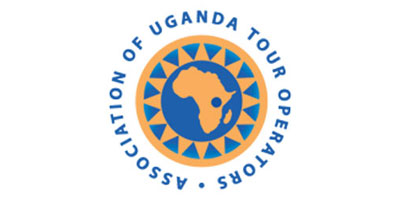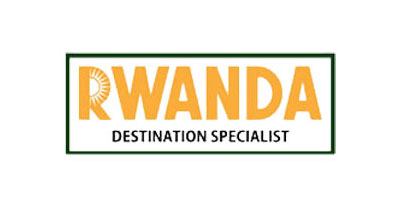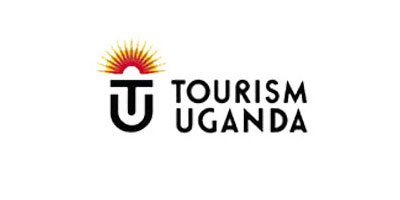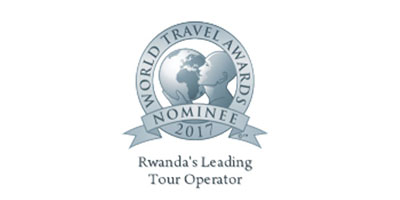Things to do in Rwanda
Gorilla trekking in Rwanda
Gorilla trek - the ultimate African wildlife adventure
Gorilla trekking or tracking in Rwanda is one of the most enthralling wildlife tours you can do on your trip to Africa. The gorilla trekking tour is a unique wildlife adventure that offers one a once-in-a-lifetime chance of walking (trekking) in the African jungle to track down a family of wild mountain gorillas and watch the silverback gorilla with his gorilla family a few meters away from you. And, coming within 7 meters of these great apes in their natural home, without any barrier in between, is not only amazing but life changing too! Gorillas share 98% DNA with humans. Gazing into their fiery brown eyes feels looking into the eyes of a long lost cousin you have always wanted to meet.
Volcanoes National Park is home of the gorilla trek in Rwanda
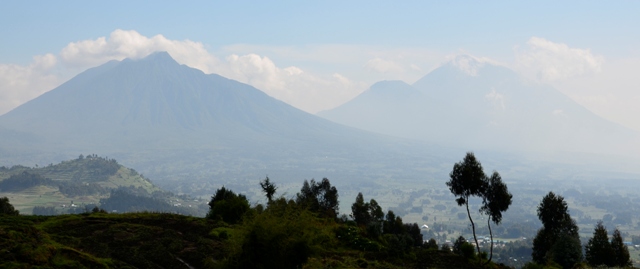
The gorilla trekking tour in Rwanda is done in Volcanoes National Park which is located in Musanze District in the north of the country, that is a distance of 116km/72miles from the capital city Kigali, and takes 2 hours of drive from the city to get to the park. Volcanoes National Park protects part of the Virunga mountains range that is made of a chain of several beautiful volcanoes spread along the border with Uganda and the Congo.
Mountain gorillas are endangered species, with only about 1000 individuals left in the world and a third of these live in Rwanda’s Volcanoes National Park.
A total of 12 mountain gorilla families in the Volcanoes National Park have been habituated for the gorilla tracking adventure.
Habituation of gorillas is the process by which trained personnel make continuous visits to a group of wild gorillas in the jungle whose instinct is to flee or attack a human because they perceive him or her an intruder in their natural space and thus a threat, to a point the gorillas will believe that the humans are actually not a threat after realizing they are not being harmed by these persistent human visitors. At this point the gorillas can tolerate the humans in their vicinity but for a short while.
Gorillas in Rwanda are named at the annual Kwita Izina gorilla naming ceremony. On this ceremony baby gorillas born in the last one year are given names. And so every gorilla individual among the habituated groups is known and monitored.
Short gorilla trips
If you would like to right away book a short gorilla trip in Rwanda below are some of the trip itineraries you can consider.
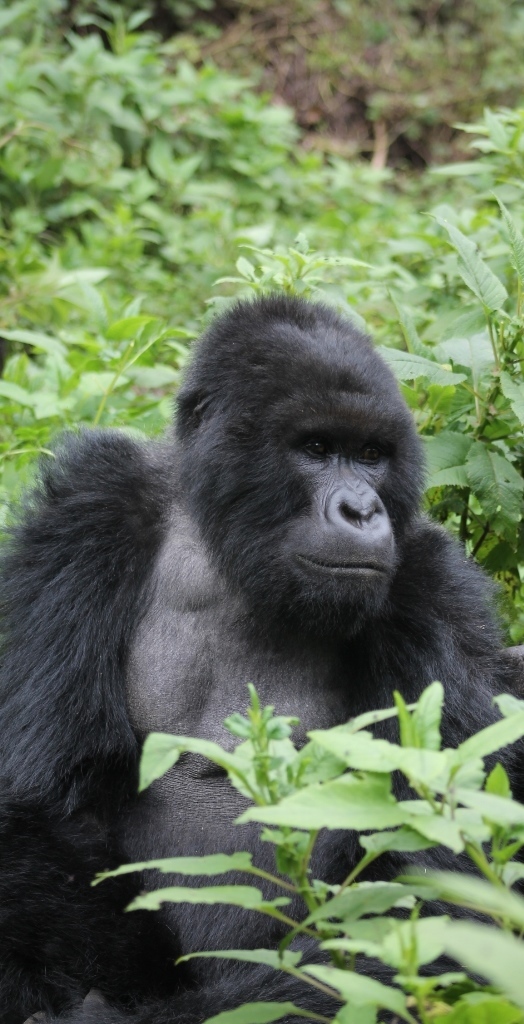
The A - Z of gorilla trekking in Rwanda including all answers to your questions
The trekking day experience
(Before you go any further, please note the minimum age limit to do gorilla tracking in Rwanda is 15 years. There are no exceptions!)
The gorilla tracking tour in Rwanda starts at the park office in Kinigi which is located just outside the park below the Virunga mountains.
There is only one gorilla trekking session in day which starts in the morning at 7am.
Visitors are required to report to the park office by 7am to be allocated to the gorilla groups they will be tracking.
The maximum number of people who can track one gorilla group is 8. This is primarily to avoid stressing the gorillas by a bigger number of people and also to limit the impact of the trekking on the habitat.
Once the allocation is done the park guides shall brief the visitors about the gorilla experience especially informing about the dos and don’ts while with the gorillas and when trekking through the park.
After the briefing session, visitors and park guides will drive from the park office in Kinigi to the boundary of the park where the trekking up the mountain range starts. Every gorilla tracking adventure in the volcanoes national park is led by a park guide who is likely to have participated in the gorilla habituation and can easily be recognized by the gorillas. There shall also be an armed soldier whose purpose is to protect against attacks from other un habituated gorillas or other wild animals such as buffaloes, elephants which live in the park. Such encounters are however very unlikely.
The gorilla groups live in different locations along the mountain range and the time taken to find one’s assigned group cannot be predicated because the gorillas are always on the move as they go feeding on plants and fruits. However, early in the morning, there are advance park trackers who set out to locate each gorilla group and relay the information about their initial positions. Hence before visitors start the gorilla trek, the park guides have an idea of the location of the gorilla families. Knowledge of where the gorillas may be helpful in assigning the nearer gorilla groups to the older or less fit travelers and the far groups to the younger and fit travelers. Therefore, finding the gorilla group can take from a few minutes to several hours. But on average it takes about 2 – 3 hours to find the gorilla family in the mountains.
After finding the gorillas, a maximum of 1 hour is allowed to be with the gorillas.
During the 1 hour with the gorillas visitors have to follow the guidelines as will have been laid out by the park guides during briefing such as:
- Keep a minimum 7 meters distance from the gorillas to minimize possible transmission of human diseases
- Always remember to be submissive
- Do not look the silverback straight in the face, but rather give a sideways glace when they approach you. A long eye-to-eye stare is a sign of challenge to the silverback's power, he can charge you!
- Do not stand over them, rather crouch and stay in a tight group
- Speak in whispers
- Do not feed the Gorillas
- Do not entice them to get in contact with you in any way
- Do not eat in the vicinity of the Gorillas
Cost of the gorilla tracking permit/ticket in Rwanda
The cost of the gorilla trekking permit in Rwanda for international tourists is: $1500
Below is the promotional 2024/2025 cost of the gorilla permit for other categories of tourists
Rwandan and East African citizens: $200
Foreign residents in Rwanda and East Africa: $500
African Citizens: $500
Foreign residents in Africa: $500
Note: From June to September, promotional permits should be purchased not less than one month to the date of trekking. If purchased less than one month the permit will cost $1500
So, one may ask, why is the Rwanda gorilla trekking permit expensive?
10% of this fee is channeled to development projects in the local communities neighboring the Volcanoes National Park. This direct benefit from the gorilla tourism by the locals has encouraged the locals to protect the park who have previously been dependent on it for agriculture, firewood, herbs, hunting and poaching which degraded the gorilla habitat and led to death of the gorillas almost leading to their extinction. Therefore when you buy a Rwanda gorilla tracking permit you are contributing to the development of the local communities and saving the mountain gorillas.
Other costs of a gorilla trip in Rwanda
The gorilla permit is the most important part of the trip because without it you cannot be allowed to the gorillas.
Beyond the permit, other costs of the gorilla trip in Rwanda include:
Transportation: You will need a car to travel from Kigali to the Volcanoes National Park. For the affluent who do not wish to waste time on the road there are helicopter transfers from Kigali to Musanze near the park.
Accommodation: If you are not doing a day trip from Kigali, and will spend at least a night near the park, there a lot accommodation options to choose from ranging from budget, midrange, upmarket, and luxury/high end, depending on the level of comfort you desire and of course your pocket.
Meals: At the minimum you will need to carry packed lunch for your gorilla trek in the mountains. Otherwise, expect to spend on meals per day of the gorilla trip.
Tips: Not mandatory but you will need to tip your the gorilla trekking guide(s), porters, and driver. Others are to tip include personnel at the hotel if you are spending at least a night in Musanze.
Level of difficulty of the trek to find the gorillas and level of fitness needed
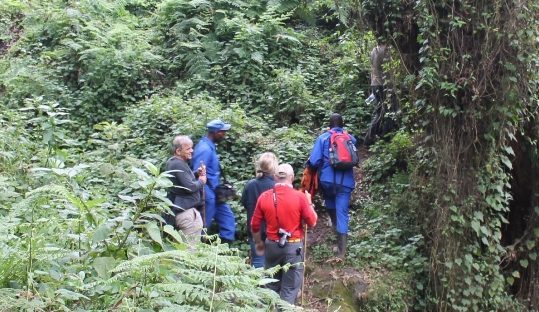
The difficulty level of the gorilla trek can be put at “challenging to difficult” because it entails climbing up and along the mountains covered with forest and vegetation while essentially making a trail where it is none existent. The trekking gets more difficult during the rainy season (March to May & October to November) because the ground gets muddy and slippery.
There are porters available for hire at $10 each and these are helpful in carrying any bag you may have and also offer some support in form of a push or pull in more challenging spots. It is highly recommended to take a porter. Porters are locals from the surrounding communities hence you would be giving back directly to the local communities by hiring one.
Visitors that are physically disabled or those that do not feel that they can manage the hike (such as the elderly or injured) can request for a stretcher that is carried by a group of able bodied young men for the whole gorilla trek. This is at an extra cost of course. Also, if along the way, one fails to continue with the hike a stretcher can be improvised made of tree branches and carried by the porters for the rest of the hike
The trek into the park starts at an altitude of about 2700 meters above sea level and one may climb up to altitude 3500 meters above sea level depending on the location of the assigned gorilla group. Hence, visitors should find out from their physicians if their health may be affected by this altitude i.e. possibility of altitude sickness. Also, during preparations before going the gorilla tour visitors should do climbs to such altitude so they can acclimatize.
Best time for the gorilla trekking in Rwanda
The gorillas can be seen all year round, however the trek is easier during the dry seasons: June to August and December to February
On the other hand the wet season months with frequent rains that is, March to May, and October to November, present the best scenery in the mountains with lush green misty hills. Also there are fewer people tracking the gorillas so if you want to avoid the crowds this is the best time for you.
How to prepare for your gorilla tracking tour in Rwanda?
- Buy your gorilla tracking permit/ticket earlier. Since only 8 persons can track a particular group and there only 12 groups means the gorilla tracking permits are limited in number.
- Get into shape and prepare for a tough hike though a softer hike to a nearby gorilla group may be possible
- Since humans share 98% DNA with gorillas means gorillas get human diseases. Hence ensure you are treated and are free of contagious diseases such as cold, flue, cough. You will not be allowed to visit the gorillas if you have any of these diseases.
What to bring for the trek
These are the most essential items that you will need for the walk/trek in the mountains:
- good hiking shoes
- rain jacket/poncho
- gaiters
- long pants and long sleeved shirt to protect from prickly plants
- a cap
- sunscreen
- garden gloves
- a small backpack to carry camera batteries, water, etc…
Trekking poles are provided by the park free of charge. These are however handcrafted wooden poles and you many not find them perfect. If you have your professional poles that you are more accustomed to please bring them.
Where else can I see mountain gorillas?
Other than Rwanda, mountain gorillas are found in only two other countries in the world and these are Uganda and Democratic Republic of Congo, and all these three countries neighbor each other sharing the habitat of the mountain gorillas. The mountain gorillas cannot survive outside of their natural habitat the reason you cannot find them anywhere else. Gorillas kept in zoos worldwide are lowland gorillas but not the mountain gorillas!
Hence, apart from Rwanda, you can do the gorilla tracking in Uganda and the Democratic Republic of Congo.
More Rwanda trips with gorilla tracking
- 1 day gorilla trekking trip
- 2 day gorilla tracking tour
- 3 days gorillas and golden monkeys tour in Volcanoes National Park
- 5 days gorilla trekking and Lake Kivu tour
- 5 days gorillas and chimpanzees tour
- 5 days gorilla trekking and Akagera National Park safari
- 7 days Rwanda primates tour
- 8 days Masai Mara Kenya wildlife safari and Rwanda gorilla trekking
